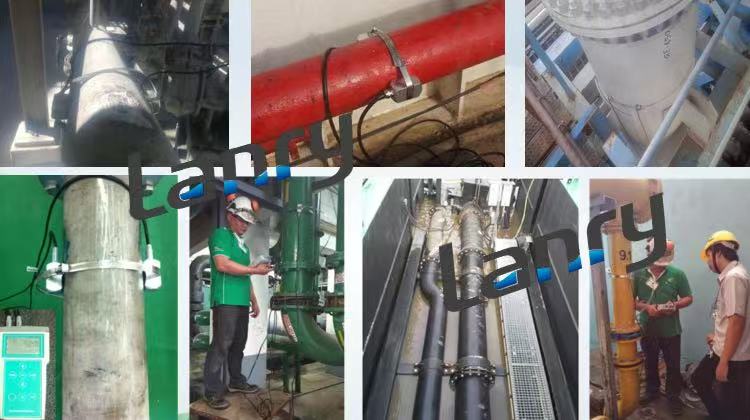Doppler ultrasonic flowmeters have found applications in a wide range of industries for flow measurement. However, compared to other flow measurement technologies, they often exhibit relatively low accuracy. This article delves into the key factors contributing to this issue.
1. Requirements for Reflective Particles
Particle Concentration and Distribution
Doppler ultrasonic flowmeters rely on the presence of reflective particles in the fluid being measured. For accurate measurements, a sufficient and uniform concentration of particles is necessary. In many real - world scenarios, maintaining a consistent particle distribution is challenging. For example, in water treatment plants, the concentration of suspended solids can vary significantly depending on the stage of the treatment process. If the particle concentration is too low, the ultrasonic signal reflected back to the transducer may be too weak, leading to inaccurate flow velocity calculations. Conversely, if the concentration is too high, signal interference can occur, distorting the measurement results.
Particle Size and Characteristics
The size and nature of the reflective particles also play a crucial role. The Doppler shift in the ultrasonic signal is sensitive to the size of the particles. Different fluids contain particles of various sizes, and if the particle size distribution is not within the optimal range for the flowmeter's design, measurement errors will arise. For instance, in an industrial cooling system, the presence of both large and small particles can cause inconsistent reflections, making it difficult for the flowmeter to accurately determine the average flow velocity.
2. Complex Flow Profiles
Turbulence and Eddies
Fluid flow in pipelines is rarely ideal. Turbulence and eddies are common phenomena, especially in pipelines with bends, valves, or sudden changes in cross - sectional area. Doppler ultrasonic flowmeters assume a relatively uniform flow profile across the pipe cross - section. However, in the presence of turbulence, the flow velocity varies significantly at different points within the pipe. This means that the ultrasonic signal may not accurately represent the average flow velocity, leading to measurement inaccuracies. In a petrochemical plant, for example, pipelines carrying viscous fluids often experience complex flow patterns due to the high viscosity and the presence of fittings, making it difficult for Doppler flowmeters to provide accurate readings.
Flow Asymmetry
Flow asymmetry can also contribute to low accuracy. If the flow is not evenly distributed across the pipe, the Doppler flowmeter may misinterpret the flow velocity. For example, in a pipeline where there is a partial blockage on one side, the flow will be skewed, and the flowmeter's measurement based on the assumption of symmetry will be incorrect.
3. Signal Interference
External Noise Sources
Doppler ultrasonic flowmeters are vulnerable to external noise sources. Electrical interference from nearby equipment, such as motors, transformers, or other electrical devices, can disrupt the ultrasonic signal. In industrial settings, where there is a large amount of electrical equipment in close proximity, this interference can be a significant problem. Additionally, mechanical vibrations from pumps or other machinery can also affect the performance of the flowmeter by introducing unwanted noise into the measurement system.
Acoustic Reflection and Refraction
The presence of obstacles or changes in the pipe material can cause acoustic reflection and refraction. When the ultrasonic signal encounters a change in the pipe wall material or an internal structure, part of the signal may be reflected or refracted, distorting the original signal and leading to inaccurate flow velocity measurements. For example, in a pipeline with a coating or lining of a different material, the ultrasonic signal may not propagate as expected, resulting in measurement errors.
In conclusion, the relatively low accuracy of Doppler ultrasonic flowmeters can be attributed to a combination of factors related to particle characteristics, complex flow profiles, and signal interference. Understanding these factors is essential for engineers and operators to make informed decisions about the use of Doppler flowmeters and to take appropriate measures to mitigate the impact of these limitations.

Post time: Mar-26-2025

